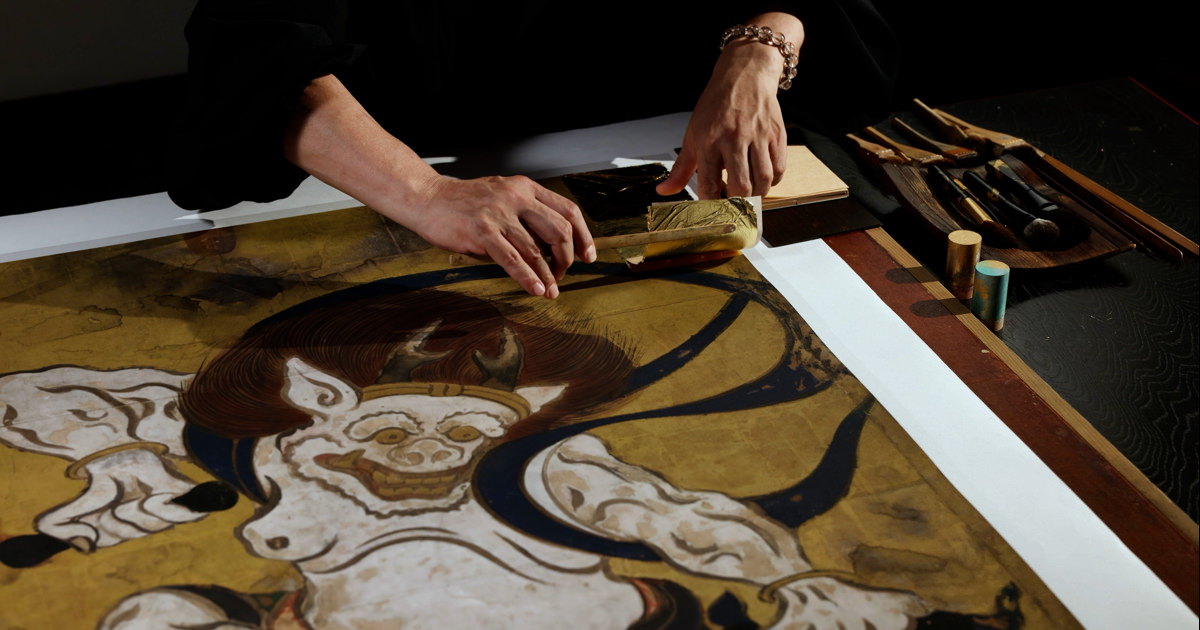Tawaraya Sōtatsu / National Museum of Asian Art, Smithsonian Institution, Freer Collection, Gift of Charles Lang Freer, F1906.231-232
These images are based on the high resolution facsimile produced by the Tsuzuri Project. Unauthorized copying, duplication, or transfer of these images is strictly prohibited.
Waves at Matsushima
High-resolution facsimiles
- Material
- printed, gold on washi paper
- Period of creation
- Tsuzuri Project Stage 3 2009–2010
- Recipient
- Shounji Temple (Daitokuji school, Rinzai sect)
Original
- Artist
- Tawaraya Sotatsu
- Historical era
- Edo (17th century)
- Material
- ink, color and gold on washi paper
- Medium
- Pair of six-fold screens
- Size
- Each screen H152.0 × W355.7 cm
- Collection
- Smithsonian's National Museum of Asian Art
Description
This work is by Tawaraya Sotatsu, founder of the Rimpa school. It is one of the six folding screens painted by Sotatsu still in existence. These screens are said to have been handed down to Shounji Temple in Sakai city, Osaka. Tani Shoan (1589 to 1644), a wealthy merchant, reputedly commissioned Sotatsu to make this painting, and later contributed it to the temple. The screens remained at Shounji until 1902, after which they became a part of the Charles Freer collection in the United States. This was sometime during the Meiji period. The right screen (shown below) shows sharp rocky reefs rendered in brilliant color, while the left screen shows pines growing on a sandy beach and a drifting cloud. Gold and ink are applied in layers to produce the dynamic effect of flowing waves.




